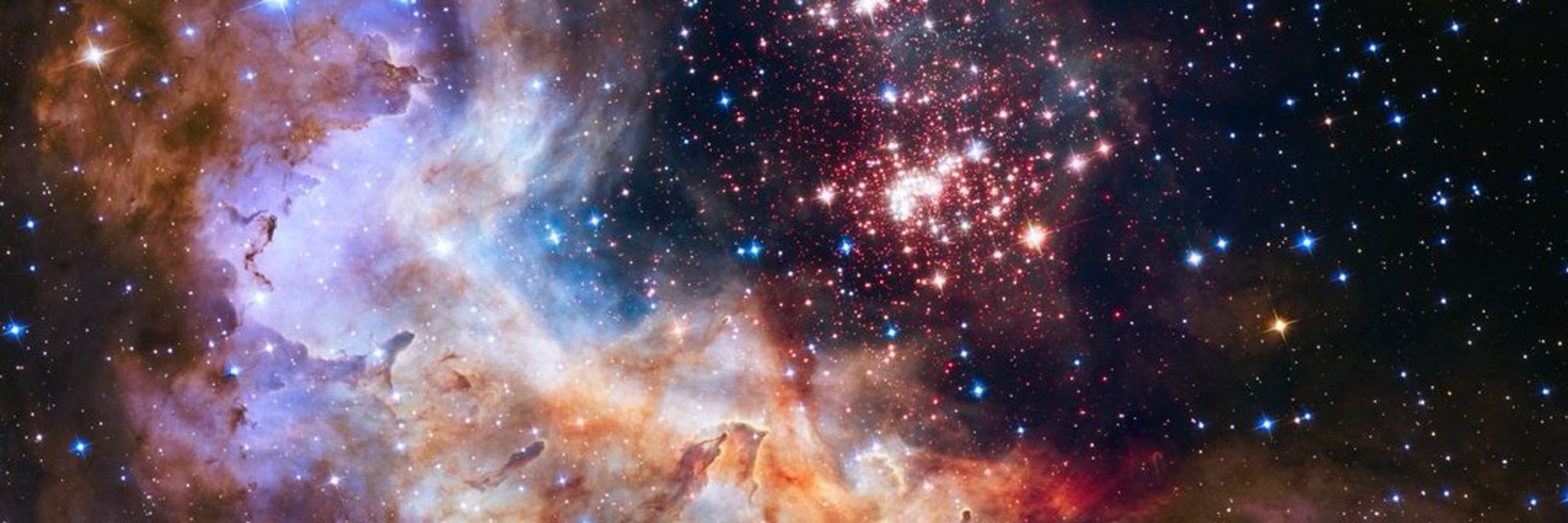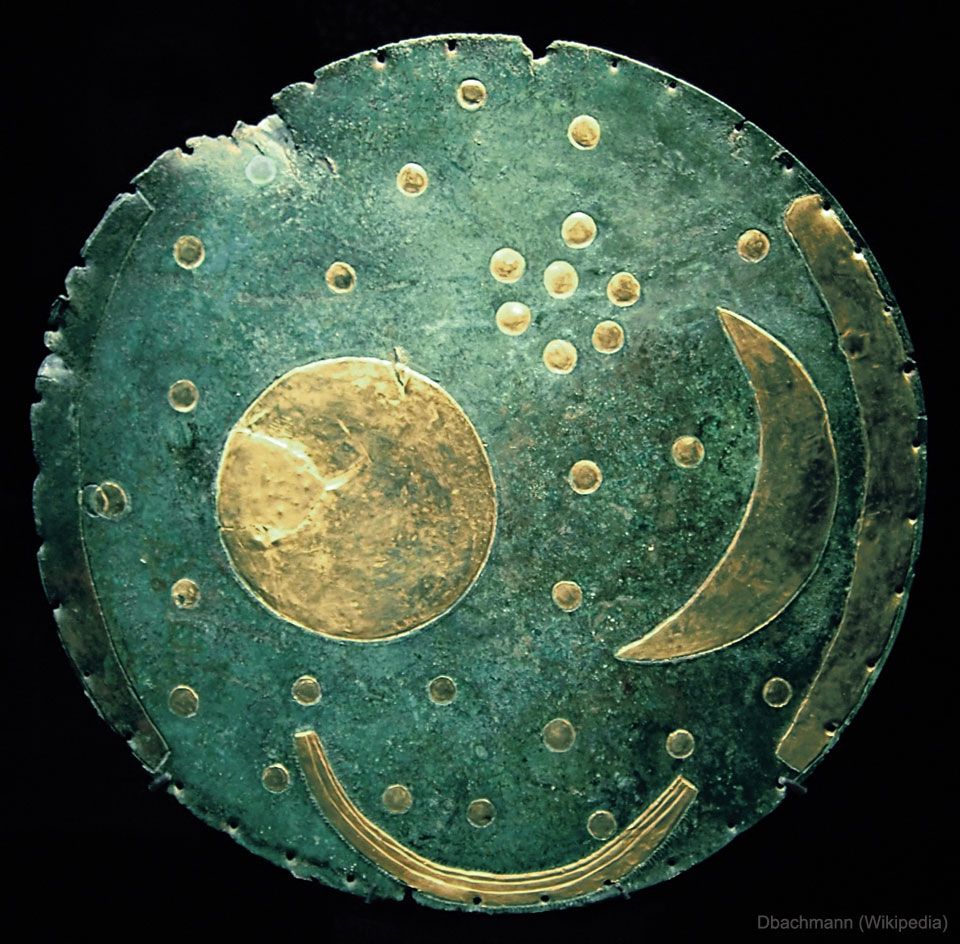
My science blog: https://www.tutto-scienze.org/
More about me: https://x.com/settings/bio

This breathtaking composite was obtained with data from Chandra, Hubble, Spitzer, to mark the 22nd anniversary in orbit of Hubble.
The pic shows 30 Doradus, also known as the Tarantula Nebula.
➡️ www.nasa.gov/image-articl...
Credits: NASA/CXC/PSU/STScI/JPL/L.Townsley et al.
🔭 🧪 #Hubble
1/5
This breathtaking composite was obtained with data from Chandra, Hubble, Spitzer, to mark the 22nd anniversary in orbit of Hubble.
The pic shows 30 Doradus, also known as the Tarantula Nebula.
➡️ www.nasa.gov/image-articl...
Credits: NASA/CXC/PSU/STScI/JPL/L.Townsley et al.
🔭 🧪 #Hubble
1/5

This breathtaking composite was obtained with data from Chandra, Hubble, Spitzer, to mark the 22nd anniversary in orbit of Hubble.
The pic shows 30 Doradus, also known as the Tarantula Nebula.
➡️ www.nasa.gov/image-articl...
Credits: NASA/CXC/PSU/STScI/JPL/L.Townsley et al.
🔭 🧪 #Hubble
1/5
This breathtaking composite was obtained with data from Chandra, Hubble, Spitzer, to mark the 22nd anniversary in orbit of Hubble.
The pic shows 30 Doradus, also known as the Tarantula Nebula.
➡️ www.nasa.gov/image-articl...
Credits: NASA/CXC/PSU/STScI/JPL/L.Townsley et al.
🔭 🧪 #Hubble
1/5

This breathtaking composite was obtained with data from Chandra, Hubble, Spitzer, to mark the 22nd anniversary in orbit of Hubble.
The pic shows 30 Doradus, also known as the Tarantula Nebula.
➡️ www.nasa.gov/image-articl...
Credits: NASA/CXC/PSU/STScI/JPL/L.Townsley et al.
🔭 🧪 #Hubble
1/5
I was browsing through NASA’s Photojournal archive when I found this historic image of Saturn, taken by Voyager 2 on Aug. 11, 1981.
The spacecraft was about 14.7 million kilometres away when the picture was captured.
Image credit: NASA/JPL
➡️ science.nasa.gov/photojournal...
🔭 🧪 #histsci
1/5

I was browsing through NASA’s Photojournal archive when I found this historic image of Saturn, taken by Voyager 2 on Aug. 11, 1981.
The spacecraft was about 14.7 million kilometres away when the picture was captured.
Image credit: NASA/JPL
➡️ science.nasa.gov/photojournal...
🔭 🧪 #histsci
1/5
interestingengineering.com/space/3i-atl...

interestingengineering.com/space/3i-atl...
I was browsing through NASA’s Photojournal archive when I found this historic image of Saturn, taken by Voyager 2 on Aug. 11, 1981.
The spacecraft was about 14.7 million kilometres away when the picture was captured.
Image credit: NASA/JPL
➡️ science.nasa.gov/photojournal...
🔭 🧪 #histsci
1/5

I was browsing through NASA’s Photojournal archive when I found this historic image of Saturn, taken by Voyager 2 on Aug. 11, 1981.
The spacecraft was about 14.7 million kilometres away when the picture was captured.
Image credit: NASA/JPL
➡️ science.nasa.gov/photojournal...
🔭 🧪 #histsci
1/5
A new study, led by Marie Barbillon, exploited the spectroscopic parametriser from Gaia DR3 to build a high-resolution extinction map! It extends up to 4 kpc from the Sun, with a finer version focused on the Local Bubble area.
#astro #galactic

Admire the extraordinary view of Pluto's nightside!
It stares back at us from the outer reaches of the Kuiper Belt in a view we’ll never forget.
Credits: NASA, Johns Hopkins Univ./APL, Southwest Research Institute
➡️ apod.nasa.gov/apod/ap24111...
🔭 🧪 #planetsci #histsci #science
1/4

Admire the extraordinary view of Pluto's nightside!
It stares back at us from the outer reaches of the Kuiper Belt in a view we’ll never forget.
Credits: NASA, Johns Hopkins Univ./APL, Southwest Research Institute
➡️ apod.nasa.gov/apod/ap24111...
🔭 🧪 #planetsci #histsci #science
1/4
This intriguing picture by Stephen Kennedy shows a vast nebula complex recalling a shark, and so commonly referred to as the Shark Nebula.
➡️ apod.nasa.gov/apod/ap23061...
It includes smaller dust nebulae such as LDN (Lynds Dark Nebula) 1235 and Van den Bergh 149 & 150.
🔭 🧪 #science
1/5

This intriguing picture by Stephen Kennedy shows a vast nebula complex recalling a shark, and so commonly referred to as the Shark Nebula.
➡️ apod.nasa.gov/apod/ap23061...
It includes smaller dust nebulae such as LDN (Lynds Dark Nebula) 1235 and Van den Bergh 149 & 150.
🔭 🧪 #science
1/5
Admire the extraordinary view of Pluto's nightside!
It stares back at us from the outer reaches of the Kuiper Belt in a view we’ll never forget.
Credits: NASA, Johns Hopkins Univ./APL, Southwest Research Institute
➡️ apod.nasa.gov/apod/ap24111...
🔭 🧪 #planetsci #histsci #science
1/4

Admire the extraordinary view of Pluto's nightside!
It stares back at us from the outer reaches of the Kuiper Belt in a view we’ll never forget.
Credits: NASA, Johns Hopkins Univ./APL, Southwest Research Institute
➡️ apod.nasa.gov/apod/ap24111...
🔭 🧪 #planetsci #histsci #science
1/4
This intriguing picture by Stephen Kennedy shows a vast nebula complex recalling a shark, and so commonly referred to as the Shark Nebula.
➡️ apod.nasa.gov/apod/ap23061...
It includes smaller dust nebulae such as LDN (Lynds Dark Nebula) 1235 and Van den Bergh 149 & 150.
🔭 🧪 #science
1/5

This intriguing picture by Stephen Kennedy shows a vast nebula complex recalling a shark, and so commonly referred to as the Shark Nebula.
➡️ apod.nasa.gov/apod/ap23061...
It includes smaller dust nebulae such as LDN (Lynds Dark Nebula) 1235 and Van den Bergh 149 & 150.
🔭 🧪 #science
1/5
It explains, clearly and straight to the point, why Loeb’s claims about #3I/ATLAS don’t hold up—not a matter of opinion, but of comet physics anyone can check.
The tail isn’t escaping gas, it’s dust pushed by solar radiation.
🔭 🧪 #science #comet ⚛️
1/2
Rodrigo Guerra’s extraordinary image captures 3 rare phenomena together:
- Venus at its maximum splendor
- intense zodiacal light
- a perfectly centered galactic bulge.
➡️ apod.nasa.gov/apod/ap21100...
🔭 🧪 #sciart 1/7

Rodrigo Guerra’s extraordinary image captures 3 rare phenomena together:
- Venus at its maximum splendor
- intense zodiacal light
- a perfectly centered galactic bulge.
➡️ apod.nasa.gov/apod/ap21100...
🔭 🧪 #sciart 1/7
It explains, clearly and straight to the point, why Loeb’s claims about #3I/ATLAS don’t hold up—not a matter of opinion, but of comet physics anyone can check.
The tail isn’t escaping gas, it’s dust pushed by solar radiation.
🔭 🧪 #science #comet ⚛️
1/2
Rodrigo Guerra’s extraordinary image captures 3 rare phenomena together:
- Venus at its maximum splendor
- intense zodiacal light
- a perfectly centered galactic bulge.
➡️ apod.nasa.gov/apod/ap21100...
🔭 🧪 #sciart 1/7

Rodrigo Guerra’s extraordinary image captures 3 rare phenomena together:
- Venus at its maximum splendor
- intense zodiacal light
- a perfectly centered galactic bulge.
➡️ apod.nasa.gov/apod/ap21100...
🔭 🧪 #sciart 1/7
Pure wonder.
Thanks for sharing this magic.🌌✨🔭 🧪 ⚛️
If you are anywhere in the northern half of the continent, get outside and look up! Or better still, put your camera on a 10 second exposure and point it up.


Pure wonder.
Thanks for sharing this magic.🌌✨🔭 🧪 ⚛️
Here is the Nebra sky disk, considered by some the oldest known illustration of the night sky.
The artifact was discovered near Nebra alongside several Bronze Age weapons and is linked to the Unetice culture, which thrived in parts of Europe...
➡️ apod.nasa.gov/apod/ap18031...
🔭 🧪 #histsci
1/4

Here is the Nebra sky disk, considered by some the oldest known illustration of the night sky.
The artifact was discovered near Nebra alongside several Bronze Age weapons and is linked to the Unetice culture, which thrived in parts of Europe...
➡️ apod.nasa.gov/apod/ap18031...
🔭 🧪 #histsci
1/4
Pure wonder.
Thanks for sharing this magic.🌌✨🔭 🧪 ⚛️
If you are anywhere in the northern half of the continent, get outside and look up! Or better still, put your camera on a 10 second exposure and point it up.


Pure wonder.
Thanks for sharing this magic.🌌✨🔭 🧪 ⚛️
From 2014–2025 at L2, it tracked >1B stars so precisely: a pinhead on the Moon from Earth!
Full data by 2030; first release predicts 7,500 planets.
Also: hypervelocity stars, quad systems & ancient galaxy merger remnants. 🔭 🧪 #science
It's great.
mathstodon.xyz/@johncarlosb...
From 2014–2025 at L2, it tracked >1B stars so precisely: a pinhead on the Moon from Earth!
Full data by 2030; first release predicts 7,500 planets.
Also: hypervelocity stars, quad systems & ancient galaxy merger remnants. 🔭 🧪 #science
From 2014–2025 at L2, it tracked >1B stars so precisely: a pinhead on the Moon from Earth!
Full data by 2030; first release predicts 7,500 planets.
Also: hypervelocity stars, quad systems & ancient galaxy merger remnants. 🔭 🧪 #science
It's great.
mathstodon.xyz/@johncarlosb...
From 2014–2025 at L2, it tracked >1B stars so precisely: a pinhead on the Moon from Earth!
Full data by 2030; first release predicts 7,500 planets.
Also: hypervelocity stars, quad systems & ancient galaxy merger remnants. 🔭 🧪 #science
Science lets us understand the wonderful universe we live in.
It allow us to find answers to emerging challenges so we can create a more just and fair global society.
🔭 🧪 ⚛️ #ScienceDay #Science
1/2

Science lets us understand the wonderful universe we live in.
It allow us to find answers to emerging challenges so we can create a more just and fair global society.
🔭 🧪 ⚛️ #ScienceDay #Science
1/2
Here is the Nebra sky disk, considered by some the oldest known illustration of the night sky.
The artifact was discovered near Nebra alongside several Bronze Age weapons and is linked to the Unetice culture, which thrived in parts of Europe...
➡️ apod.nasa.gov/apod/ap18031...
🔭 🧪 #histsci
1/4

Here is the Nebra sky disk, considered by some the oldest known illustration of the night sky.
The artifact was discovered near Nebra alongside several Bronze Age weapons and is linked to the Unetice culture, which thrived in parts of Europe...
➡️ apod.nasa.gov/apod/ap18031...
🔭 🧪 #histsci
1/4
Thanks to @deschscoveries.bsky.social @michael-w-busch.bsky.social @cometary.org and @marshall-eubanks.bsky.social for contributing their expertise!

― Carl Sagan, born 9 November 1934
Video Credit: @planetarysociety.bsky.social
#PaleBlueDot 🔭 🧪 #CarlSagan
― Carl Sagan, born 9 November 1934
Video Credit: @planetarysociety.bsky.social
#PaleBlueDot 🔭 🧪 #CarlSagan

